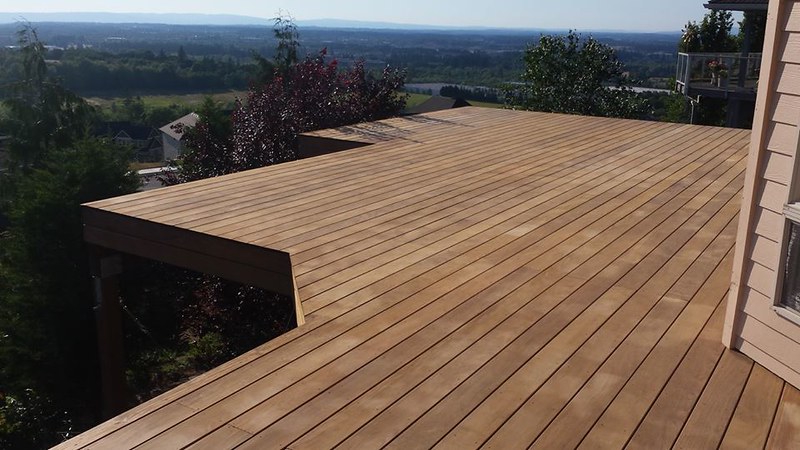As the world moves towards more sustainable construction practices, the choice of materials plays a crucial role in achieving environmentally friendly and long-lasting buildings. Among the various options available, Ipe wood stands out as a premier choice for sustainable construction. Known for its exceptional durability, natural beauty, and eco-friendly attributes, Ipe wood is increasingly becoming the material of choice for architects, builders, and homeowners who prioritize sustainability. This article explores the various ways in which Ipe wood contributes to sustainable construction practices.
1. Exceptional Durability and Longevity
Natural Resistance to Decay
Ipe wood, also known as Brazilian Walnut, is renowned for its incredible durability and resistance to decay, rot, and insect damage. This natural resilience eliminates the need for chemical treatments that are often required to protect other types of wood, making Ipe a healthier and more environmentally friendly option.
Long Lifespan
The lifespan of Ipe wood far surpasses that of many other wood species. When used in outdoor applications such as decking or siding, Ipe can last over 50 years with minimal maintenance. This longevity means fewer resources are needed for repairs and replacements, reducing the overall environmental impact.
2. Sustainable Harvesting Practices
Responsible Forestry
Ipe wood is sourced from responsibly managed forests that adhere to strict environmental guidelines. Sustainable harvesting practices ensure that the wood is harvested in a way that maintains the health and biodiversity of the forest ecosystem. Many suppliers of Ipe wood are certified by organizations such as the Forest Stewardship Council (FSC), which promotes responsible forest management worldwide.
Reduced Environmental Impact
By choosing Ipe wood from certified sources, builders and homeowners can be confident that they are supporting sustainable forestry practices. This helps to reduce deforestation and habitat destruction, contributing to the preservation of vital ecosystems and biodiversity.
3. Minimal Environmental Footprint
Low Carbon Emissions
The production and processing of Ipe wood generate significantly lower carbon emissions compared to other building materials such as concrete or steel. Wood is a natural carbon sink, meaning it absorbs carbon dioxide from the atmosphere as it grows. Using wood in construction helps to sequester this carbon, effectively reducing greenhouse gas emissions.
Energy Efficiency
Ipe wood’s high density and thermal properties contribute to energy efficiency in buildings. It provides excellent insulation, helping to maintain stable indoor temperatures and reducing the need for heating and cooling. This results in lower energy consumption and a reduced carbon footprint over the life of the building.
4. Versatility in Sustainable Design
Outdoor and Indoor Applications
Ipe wood’s versatility makes it suitable for a wide range of applications, both outdoors and indoors. Its durability and resistance to weathering make it ideal for decking, siding, and outdoor furniture. Indoors, Ipe can be used for flooring, cabinetry, and decorative elements, adding a touch of natural beauty and sustainability to any space.
Aesthetic Appeal
In addition to its practical benefits, Ipe wood offers unmatched aesthetic appeal. Its rich, dark brown color and fine grain add a luxurious and timeless quality to any construction project. This natural beauty reduces the need for additional finishes or treatments, further minimizing environmental impact.
5. Maintenance and Lifecycle
Low Maintenance Requirements
One of the significant advantages of Ipe wood is its low maintenance requirements. Unlike other materials that may need frequent painting, sealing, or chemical treatments, Ipe retains its structural integrity and appearance with minimal upkeep. Occasional cleaning and oiling are typically sufficient to maintain its beauty and durability, reducing the environmental impact associated with maintenance.
Recyclability and End-of-Life Disposal
At the end of its long life cycle, Ipe wood can be recycled or repurposed, further contributing to sustainable construction practices. Unlike synthetic materials that may end up in landfills, wood can be broken down and reused in various applications, such as mulch, compost, or reclaimed wood products.
6. Health and Wellbeing Benefits
Indoor Air Quality
Using natural materials like Ipe wood in construction can improve indoor air quality. Unlike synthetic materials that may off-gas harmful chemicals, natural wood does not emit volatile organic compounds (VOCs). This contributes to healthier indoor environments, promoting the wellbeing of occupants. You can also contact hardwood suppliers.
Biophilic Design
Incorporating natural elements like Ipe wood into building design aligns with the principles of biophilic design, which emphasizes the human connection to nature. Exposure to natural materials has been shown to reduce stress, enhance mood, and improve overall wellbeing, making Ipe wood an excellent choice for creating healthy and sustainable living spaces.
Conclusion
Ipe wood’s exceptional durability, sustainable harvesting practices, low environmental footprint, and versatile applications make it a standout choice for sustainable construction. By choosing Ipe wood, builders and homeowners can contribute to environmentally friendly practices, reduce their carbon footprint, and create beautiful, long-lasting structures. As the demand for sustainable building materials continues to grow, Ipe wood remains a leading example of how natural resources can be utilized responsibly and effectively in modern construction. Embracing Ipe wood not only supports sustainable forestry but also paves the way for a greener, healthier future in the construction industry.
Stay in touch to get more news & updates on Mystorieslist.Com!
